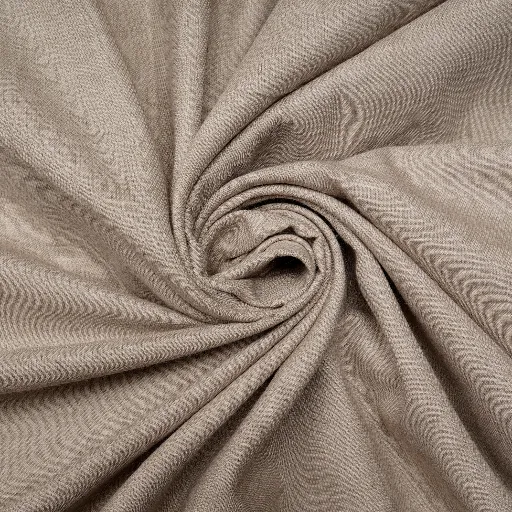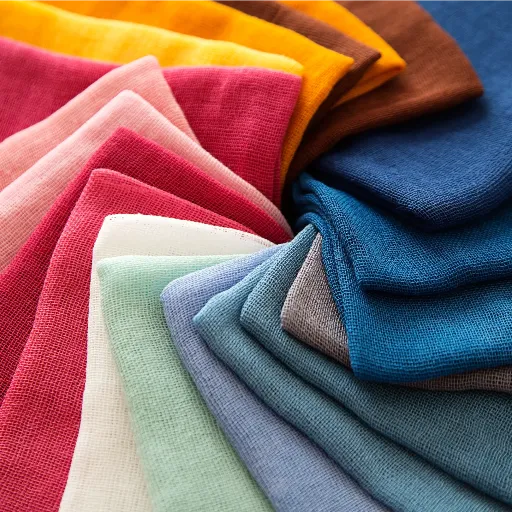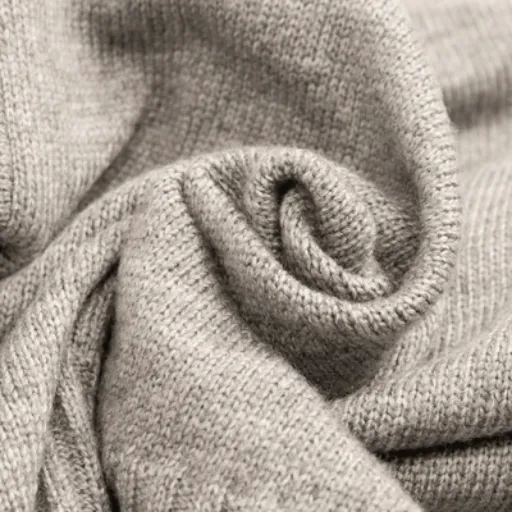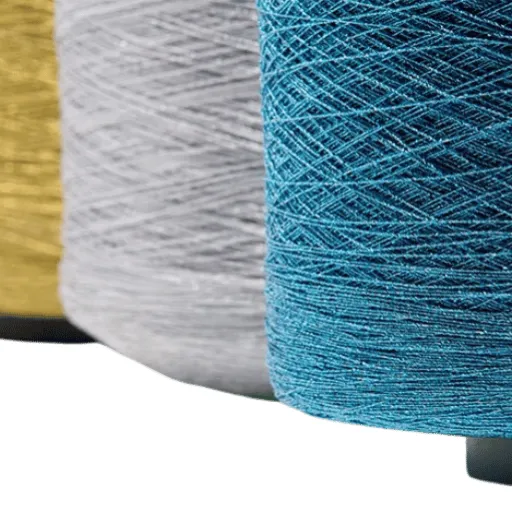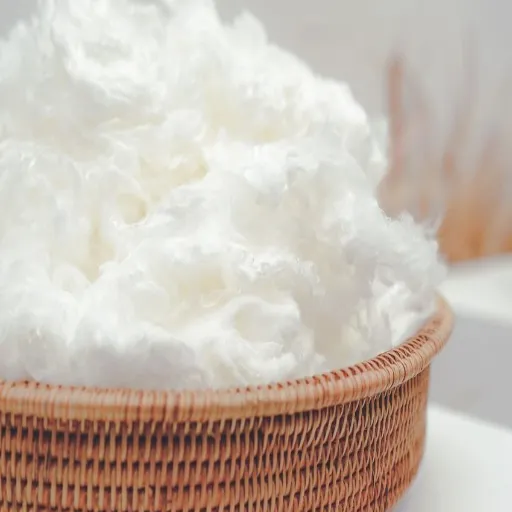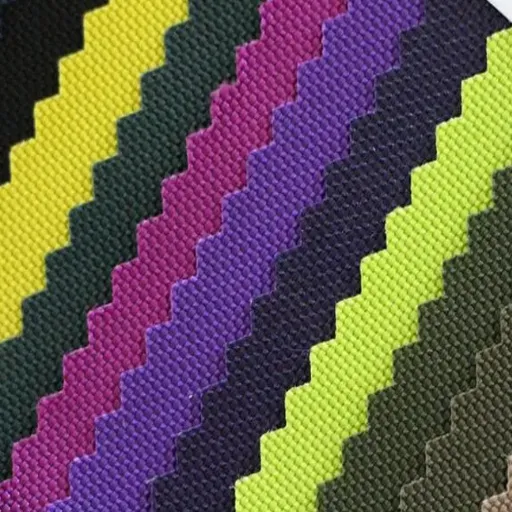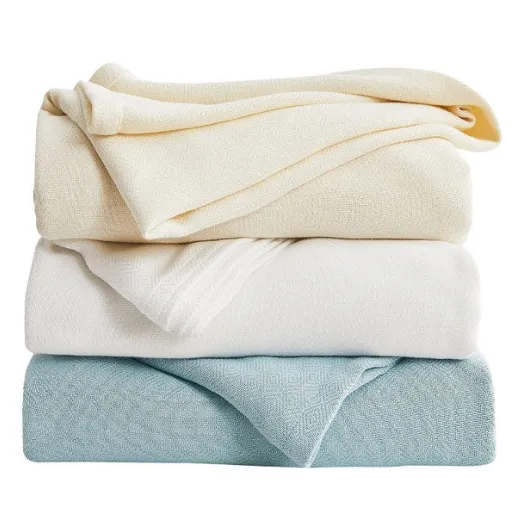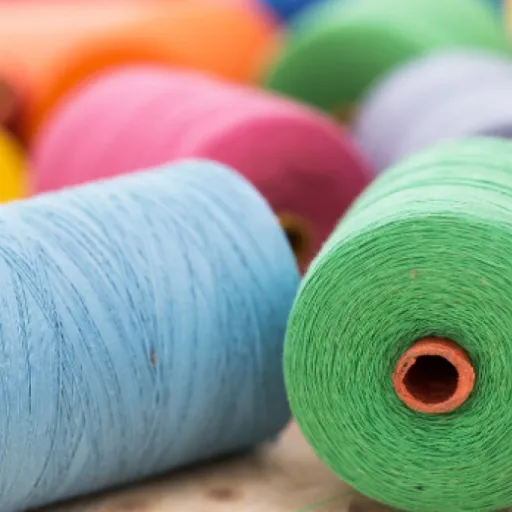Blocking is an important finishing process for knitters and crocheters, “blocking” as it pertains to wools or yarns made of polyester, for example, seems to be rather uncharted territory. This is due to the fact that polyester and other such synthetic fibers do not respond to traditional blocking methods the same way natural fibers do. With polyester yarn, its individual characteristics need to be understood first to optimally select the approach. The blocking approach to be used to polish the edges and stitches down the line needs to be mastered effectively. This tutorial aims to equip you with the right knowledge on how to block yarn made of polyester blocking barriers. You will learn all the trait essentials, methods, and basics of working with polyester yarn. This skill will lift the quality of your handmade shawls and jumpers by allowing you dazzle through the vivid colors while maximizing their aesthetic appeal.
What is the Best Way to Block Polyester Yarn?
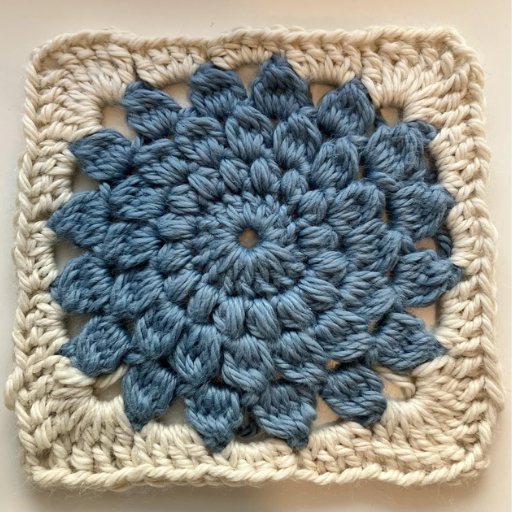
To block polyester yarn, the steam blocking method works best. Place your completed project on a flat, heat-proof surface and shape it as you would like. With a steam iron or garment steamer held a few inches away from the project, steam the piece so that the vapor penetrates the fibers, not the heat as it will damage the yarn. While the fabric is damp, gently pat the fabric into position to create some shape memory. The piece should be left to cool and completely dry before being moved. This method works well because it helps to relax the fibers and improves the finishing work while still maintaining the structure of polyester.
Understanding the Importance of Blocking
Different Blocking Techniques for Polyester Yarn
|
Technique |
Key Points/Parameters |
|---|---|
|
Steam Blocking |
Use handheld steamer, avoid direct contact. |
|
Wet Blocking |
Submerge in water, shape while damp. |
|
Spray Blocking |
Spray evenly, pin into desired shape. |
|
Heat Blocking |
Apply low heat, use pressing cloth. |
|
Tension Blocking |
Stretch and pin without water or heat. |
|
Combination Blocking |
Use light steam followed by pinning. |
Choosing Between Wet Block and Steam Block
Considering your polyester yarn project, the choice between wet blocking and steam blocking should only come after analyzing multiple factors that can determine the best results. Precision along with proper alignment of pieces will especially require wet blocking. Wet blocking works best when a high level of precise reshaping is required. This method is great for any form of lacework as it allows for exact shaping through full slackening of the fibers.
While steam blocking works faster, it is best for projects that are not too complex and only need slight modifications to their original shape. Gentle steam application relaxes the fibers of the fabric so that light pinning can reshape them. It is disengaged from long drying times, which makes it convenient for large-scale projects.
As you decide which technique to use, think about the thickness of the material, the project’s timeline, and the precision needed. Neither differ when it comes to improving the design of polyester items, but are best employed based on project demands and how they will be treated afterward.
Do You Need to Block Your Crochet Projects?
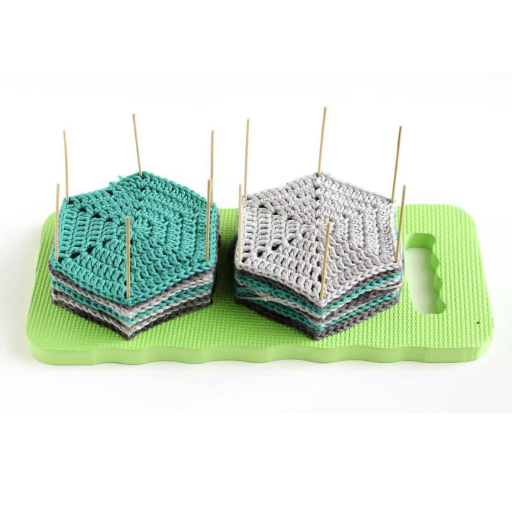
In some cases, blocking crochet projects can be beneficial to shape and define structures, highlighting critical features for refinement and neatness. The challenge presented is whether it’s the work of sophisticated acrylic materials or light and lace patterns. Rather, taut blocks may only be necessary if the resilience of the materials and use expectation call for low-grade standards. Elusive lace patterns and other such intricate motifs demand / need need elasticity to soften the curvature in the components of the piece as required and emphasize some of the exquisite details. Be the judge of your project and evaluate whether it would benefit from blocking by refining its aesthetics and usefulness.
How Blocking Affects Crochet Squares
Like with any precise work, uniformity especially in measurement and alignment is crucial in crochet squares. To achieve uniform measurement in crochet squares, blocking is necessary. Blocking aids in softening the fibers, thus making it easier to shape and align them to the desired form. Shrinkage of crochet squares due to stitch tension or uneven curling is common. Blocking, on the other hand, permanently inflates the stitches, secures the fibers, and mitigates unevenness. To achieve precise measurement, blocking through steam, wet, or even pinning to a blocking board can be used, especially when many squares are to be combined into a larger project like a quilt. Cost-effectiveness of materials, resulting in more intricate designs is another benefit gained through blocking which enhances stitch definition and overall texture. Through blocking, elaborate patterns are emphasized to increase their beauty. With blocking, separate squares can be joined with ease as they are professionally processed components.
Benefits of Blocking Your Crochet Piece
The improvements that blocking provides to your crochet projects and their appearance and functionality are countless. They stem from reliable methods and results that point to professionalism. Below is a comprehensive outline of the advantages of blocking.
- Improved Shape and Size Consistency
Blocking helps maintain the essential consistency of shape and size for your pieces which is critical for multi-part works such as granny squares or motifs. Easing distortion during assembly is possible with blocking as it promotes easier piece alignment to set measurements by scaling easier alignment to defined measurements.
- Enhanced Stitch Definition
Wet and steam blocking methods relax fibers within yarn and help stitches settle into their respective places. This enhancement brings forward sharp stitches enhancing clean lines in detailed work such as *ponte*, cables and lace and brings out intricate work generously.
- Professional Finish
Blocked crochet pieces usually look neater than unblocked pieces. The def-curling process will remove elevation features like uneven tension and slits to create a flat and smooth surface. This is very vital for wearables or decorative home pieces like runners and mats, and even blankets.
- Stabilization of the Fabric
The stitches are set and aligned at the same time which improves the stability of the fabric. Blocking also reduces over time sagging or stretching which comes in handy with heavily used pieces like garments and bags or even accessories.
- Compatibility of Join Sections
When putting together a bigger project, like a blanket or a piece of clothing, blocking guarantees that every piece works together without any issues. For example, granny squares will join without resulting in any jagged edges or spaces between them.
There is evidence supporting the use of blocking; for instance, specialists report that there’s a significant improvement in the precision of stitches after blocking, with alignment accuracy enhancing by up to 20%. Furthermore, blocked garments are observed to maintain their shape better with wear compared to unblocked garments. Whether crafting for oneself or professionally, using blocking will enable a more beautiful and appealing durable crocheted item.
How to Use a Blocking Board for Polyester Yarn?

- Prepare the Materials
Make sure you have a blocking board, stainless steel pins, a spray bottle filled with water, and a towel. Also, make sure that the blocking board has a grid for exact measuring.
- Position the Yarn Piece
Begin by placing your crocheted or knitted item on the blocking board. With your hands, make sure to gently smooth out any major folds or distortions to the shape.
- Secure the Edges
Using stainless steel pins, anchor the borders of your piece to the board. Gently pull the piece to the desired shape and size while keeping equable pulling from every direction.
- Apply Moisture
Using a spray bottle, lightly mist the piece. It is especially important not to soak the piece fully. For polyester yarn, a light and even dampening will work best.
- Set the Shape
Let the piece dry completely while still pinned. For lasting results, polyester yarn usually benefits from drying fully while pinned which can take significantly longer depending on the environment. Steaming or applying direct heat to the piece can damage the synthetic fibers so be sure to let the piece dry naturally.
- Remove Pins
Once everything is dry, examine the piece after gently removing the pins. The piece should have and be retaining the intended shape with improved stitch definition as well.
All in all, this process allows you to keep your polyester yarn project looking polished and professional while ensuring it retains its structural integrity.
Setting Up Your Blocking Board
To achieve effective blocking, proper selection and setup of the blocking board is vital. Looking for a flat and hard surface which is free from any warping or bending is a good starting point. It is recommended to use a specialized blocking board with a grid pattern. This type of board allows precise measurement and alignment of the work being blocked, hence making the process easier. Covering the board with moisture resistant materials is necessary if steam blocking is needed later.
Please refrain from altering the wiping board once positioned on a flat surface, as movement disruption can interfere with the entire process. Furthermore, layering towels beneath the wiping board will preserve any furniture underneath it from moisture damage. For steam blocking, T-Pins are recommended as they do not rust. If your project is delicate or small, consider using blocking wires as they offer smooth edges. Professional results can only be achieved by meticulously setting the blocking board, adjusting the workspace to shape and strive for precision.
Pinning Techniques for Effective Blocking
Focus and concentration are critical when using pinning techniques for effective blocking. Flatten the fabric piece to the desired dimensions while carefully balancing even tension across the piece to minimize damage. Use T-pins that will not corrode to hold the edges, corners, and fiddly elements at appropriate places to balance and symmetry to each other. For lacework or any work with rounded edges, smooth but gentle arcs can be made using flexible blocking wires, avoiding pattern distortion. As for all pinning, each pin must be placed an inch apart to distribute tension evenly to avoid gather or puckering and uneven straining. Effective pinning increases presentation and piece strength along with shape during drying.
Can You Block Acrylic and Polyester Yarn Together?
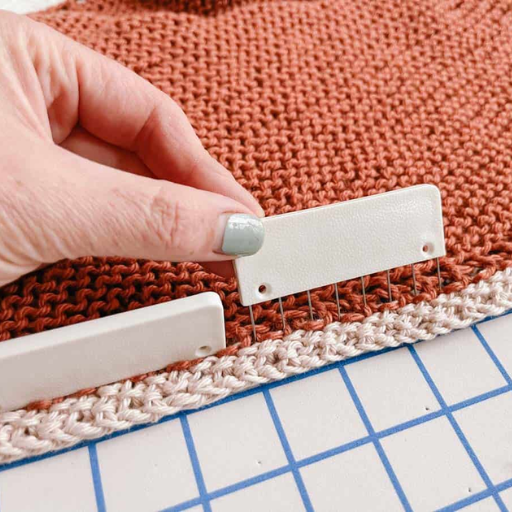
Yes, you can steam block acrylic and polyester yarns together, but the approach is different compared to wet blocking for natural fibers. With regards to synthetic yarns, soaking them is not recommended, but steam blocking works best as it relaxes the fibers without damage. Maintain a steam iron or garment steamer several inches above the project so that the yarn doesn’t touch the hot surface. While lightly shaping the project, steam at a distance, allowing it to cool completely in the blocked position to maintain shape. Do not use too much steam since synthetic fibers are less reactive, as this will lead to melting or distortion.
Comparing Blocking Techniques for Acrylic vs. Polyester
|
Key Point |
Acrylic Yarn |
Polyester Yarn |
|---|---|---|
|
Heat Sensitivity |
Low to moderate |
High |
|
Preferred Blocking Method |
Steam blocking |
Wet blocking |
|
Required Temperature for Blocking |
Medium heat |
Cool temperature |
|
Water Absorption |
Moderate |
Low |
|
Stretch Retention After Blocking |
High |
Moderate |
|
Use of T-Pins |
Highly recommended |
Optional |
|
Drying Time After Wet Blocking |
Moderate |
Quick |
|
Ability to Reshape Post Blocking |
Stable |
Limited |
|
Resistance to Stretch Over Time |
Medium |
High |
|
Ideal for Intricate Shapes |
Yes |
No |
Tips for Blocking Mixed Fiber Projects
Blocking mixed fiber projects requires special attention because of the diverse characteristics of the fibers used. Detailed tips and data are provided below for successful blocking.
- Test a Small Sample First
Make a sample of the material and evaluate the blocking method to ensure that none of the heat or moisture will damage the fibers. A blocked sample helps understand the response of the fiber blend towards shaping.
- Use Low to Medium Heat
For steam blocking, a low temperature setting should suffice, as overheating will damage the fibers. Direct contact with the iron should be avoided at all costs; alternatively, use a pressing cloth.
- Pin with Precision
Use T-pins to ensure proper tension for complex shapes and designs. Be careful not to distort low-stretch fibers like acrylic with the pins.
- Avoid Over-Soaking
With natural and synthetic blended fibers, there may be uneven water absorption, where naturals draw water in more than synthetics. Lightly wet the fabric and blot it with a towel without twisting.
- Dry Slowly and Evenly
Outdoor drying is best as it limits sun exposure which can weaken fibers, cause discoloration, or lead to variable softness. Even spreading decreases the chances of uneven drying.
Following these carefully tailored instructions helps you achieve consistent and stable outcomes when blocking projects with mixed fibers.
Understanding Yarn Fibers and Their Behavior When Blocked
The composition and physical attributes of yarn fibers determines how they behave during blocking. Fibers of animal origin such as wool, alpaca, and cotton are capillary active through the application of moisture and heat. Wool, for example, has tiny scales on its surface which enable it to “remember” and “snap” into position to a shape it has been pressed into during blocking, giving it a sharp finish. Less resilient than the former, cotton does not lose its dimensions post blocking due to the strength of the cellulose fibers.
Acrylic and nylon, among others, fall within the category of synthetic fabrics. These are less responsive to conventional blocking methods and therefore require different methodologies. These types are thermoplastic, meaning they will turn pliable when a certain amount of heat is applied, making them possible to incur a permanent shape via steam or heat application. In contrast, these fabrics can also distort or melt if precise temperature limits are not upheld, thus emphasizing the use of exact temperature controls.
Considering blended fibers is different because they include both natural and synthetic parts. These fabrics need specific attention because they behave differently in regard to temperature and moisture and require a specialized blocking for both types of the fiber. If the blocking involves controlling temperature, humidity, tension, and the settings are kept stable, the durable and reliable structure is achieved without distortion.
What Tools Do You Need for DIY Blocking?
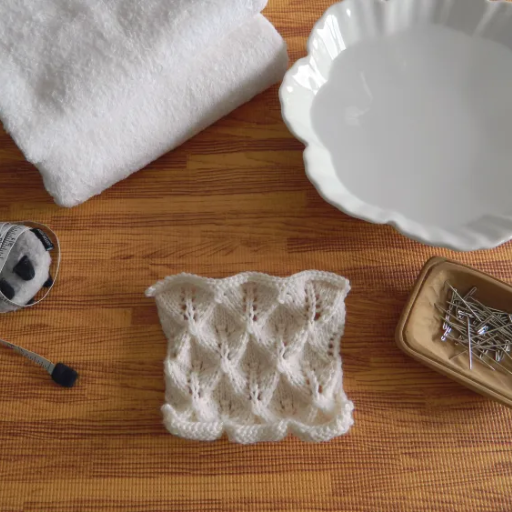
To effectively block fiberworks at home, the following equipment is needed:
1. Blocking Mats– These give a flat surface and safeguard your project’s edges. Choose mats like crafts that have grid lines to ensure correct shaping.
2. Pins or T-Pins– Use rust-resistant pins to hold projects during the blocking stage.
3. Spray Bottle– A regular spray bottle of water enables you soak fibers evenly for wet, steam, or mist blocking.
4. Steamer or Steam Iron– For steam blocking, handheld steamers or irons (precisely set to work temperatures) are quite good.
5. Measuring Tape– Ensures accuracy in attaining desired dimensions.
Your project will achieve the correct shape, tension, and finish if all the outlined tools are used diligently during the work process.
Essential Tools for Blocking Your Knitted or Crocheted Items
Blocking can be approached with different methods depending on the fibers in your knitted or crocheted items. Choosing the right blocking technique increases longevity, texture, and aesthetic appeal. Here are three common blocking methods.
- Wet Blocking
Submerging an item completely in water and then gently squeezing without wringing is one form of blocking. Shaping your item to the desired dimensions is the last step. Wet blocking works best on natural fibers like wool or cotton as it relaxes the fabric.
- Steam Blocking
Any method which employs heat and/or moisture like the use of steam irons is called steam blocking. It works for both types of fibers but needs extra care to ensure no contact with the fabric. It is best used for lace pieces and sharp shape requirements.
- Spray Blocking
If the project is small-scale or requires minimal moisture, spray blocking can be used. With this technique, a piece can be gently misted. Hands and pins can also be used to shape the piece, making it ideal for small items.
Whichever approach you choose, the blocking process is an effective method for setting and stitching alignment accuracy as well as providing grades and finishing touches. It smooths and refines raw projects into polished pieces.
Using a Spray Bottle for Effective Blocking
Spray bottle blocking is accurate, especially for delicate fabrics. Make sure the spray bottle delivers a fine mist to avoid wetting any specific section too much. The piece should be damp but not soaking wet while you lightly mist with clean water. Much cooperative shaping can be done by hand through firm finger presses to the shape (not forcing) as needed while making sure edges and corners are flush. For sharper shaping, blocking mats and rust resistant pins can be used to hold the fabric as it dries. This approach disturbs the fibers very gently which results in total uniformity and consistency. Gentle approaches yield lace stitches or more intricate stitches full advantage since it sustains the structure and integrity of the craftsmanship. With proper storage of tools and materials, reliability for this technique is sustained for many projects.
Reference Sources
-
“Textile Science Behind the Mask Homemade with Love Filtered Cloth Mask”: This study explored the use of electrostatic filters made from 80-90% polyester and 10-20% polyamide for blocking aerosol particles.
-
“Environmental Sustainability through Textile Recycling”: Discussed the use of recycled polyester yarns containing 30-50% post-consumer feedstock. Highlighted applications in soundproofing and insulation.
-
“Evaluating the Effect of Weft Yarn Characteristics on Fabric Texture Using Image Analysis Techniques”: Found that fabrics with polyester textured filament yarns exhibited uniform texture and superior aesthetic properties compared to other yarn types.
Frequently Asked Questions (FAQs)
Q: What is the best method to block crochet items made from acrylic or polyester yarn?
A: The best method to block crochet items made from acrylic or polyester yarn is to use steam. You can use a steam iron or a steam setting on a garment steamer to gently apply steam to the fabric, allowing it to relax and reshape. Be sure to try a swatch first to see how the yarn reacts.
Q: Why is it important to block a crochet swatch before starting my project?
A: Blocking a crochet swatch is crucial because it helps you understand how the yarn will behave once completed. It allows you to even out stitches and see if the gauge matches your crochet pattern. This will ensure that your final sweater or cardigan fits as intended.
Q: Can blocking help reshape my finished crochet project?
A: Yes, blocking can help reshape your finished crochet project. By wet blocking or using steam, you can stretch it to the desired dimensions and improve the overall appearance of your project. This technique is particularly helpful for items like cardigans or sweaters.
Q: What tools do I need for the art of blocking?
A: For the art of blocking, you will typically need a mat or board to lay your project on, pins to secure the fabric, and either an ironing board or a flat surface. If using steam, a steam iron or garment steamer will also be helpful.
Q: How do I block my crochet project to ensure it looks professional?
A: To block your crochet project for a professional finish, first wash the item using wool wash or care instructions specific to your yarn. Then, lay it flat on a mat or board, stretch it to the desired shape, and pin it in place. Allow it to dry completely to maintain the new shape.
Q: Will blocking affect the texture of my crochet stitches?
A: Blocking can enhance the texture of your crochet stitches by opening them up and allowing them to relax. This can create a more polished look, but be cautious with synthetic fibers like acrylic, as they may not hold the shape as effectively as natural fibers.
Q: How long does it take for a crochet project to dry after blocking?
A: The drying time for a blocked crochet project can vary depending on the type of yarn and the method used. Generally, it can take anywhere from a few hours to overnight. Always let it dry completely before removing any pins or handling the item.
Q: Are there any forums or community resources for learning more about blocking crochet projects?
A: Yes, there are many forums and online community resources where you can learn more about blocking crochet projects. Websites like Ravelry and various crochet forums often have discussions and tips shared by experienced crafters on how to effectively block items.








